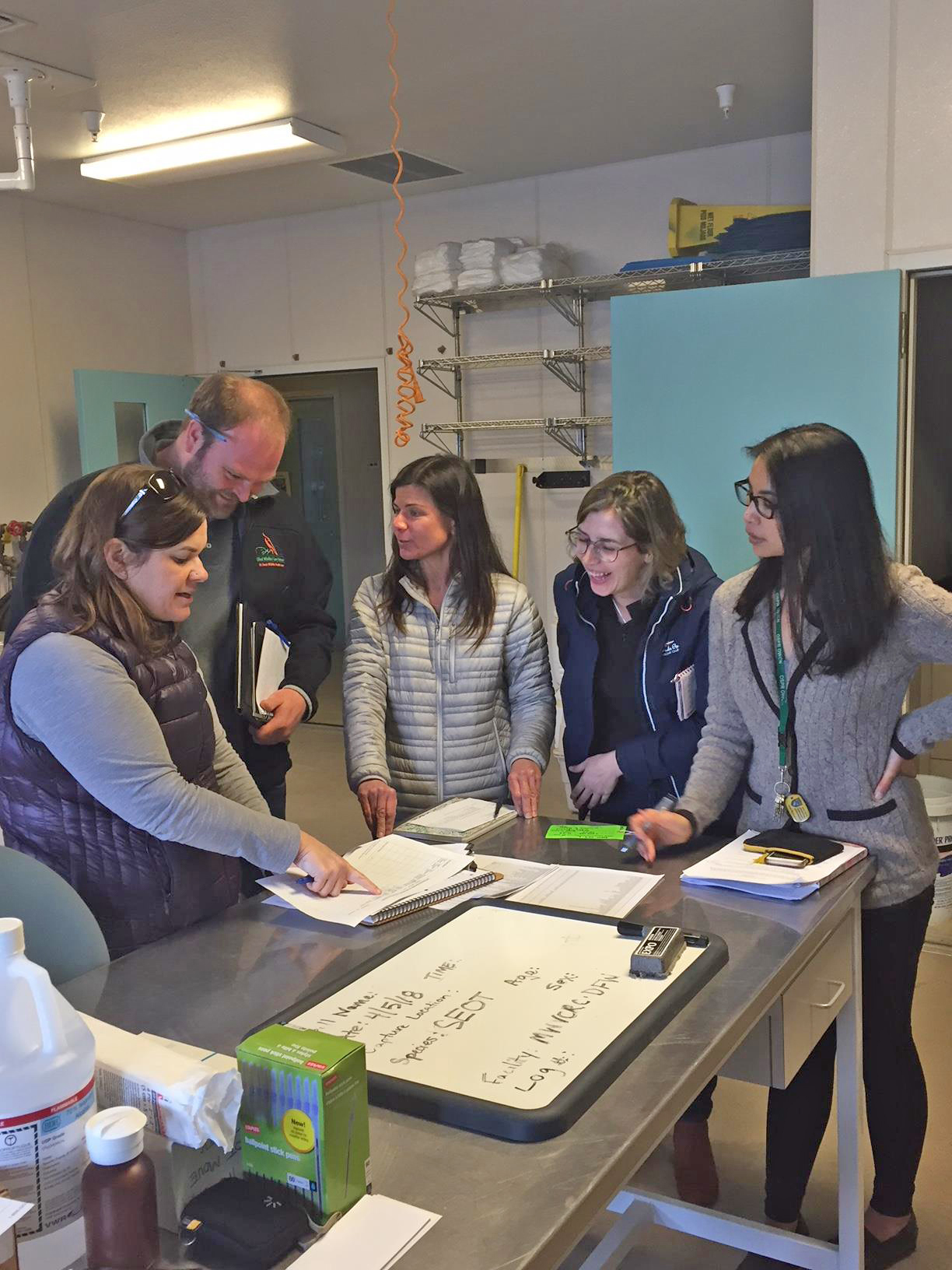OSPR scientists and colleagues, including eighteen veterinarians and rehabilitation specialists, participated in the annual southern sea otter oil spill drill at OSPR’s Wildlife Care Center in Santa Cruz.
Participants came from organizations around California and included a Brazilian veterinarian responsible for oiled wildlife response in Brazil, who was visiting The Marine Mammal Center in Morro Bay, as part of their veterinary exchange program.
“These drills are a great opportunity for sea otter specialists to validate and optimize our response processes, to foster consistency for sea otter care statewide, and to learn from each other practical tips and approaches to cleaning oiled sea otters,” said Wildlife Care Center Supervisor Laird Henkel. “The collaboration and cooperation from participants is essential so that we continually improve how we respond to oiled sea otters.”
OSPR’S Wildlife Care Center is the first-of-its kind facility in the United States dedicated to the rescue, rehabilitation and research of oiled marine wildlife, with an emphasis on southern sea otters. The Wildlife Care Center is the state-designated facility in California to treat and rehabilitate oiled otters and has customized equipment including floating pens large enough to house sea otters after being washed, and specialized pools for recovery that mimic conditions of sea otter habitat.
This year’s drill focused on new data forms and protocols outlined in the recently finalized “Protocols for the Care of Oil-Effected Sea Otters” prepared by the Oiled Wildlife Care Network and MWVCRC staff with input from specialists from the Southern Sea Otter Research Alliance.
The Southern Sea Otter Research Alliance is a multi-disciplinary, collaborative team of researchers from six primary institutions, with help from other state, federal and non-governmental organizations who specialize in the conservation and recovery of the threatened Southern sea otter and its habitat.
Sea otter rehabilitation specialists walked through and reviewed the new protocols using case examples for each phase of care of oiled sea otters: field recovery, field stabilization, intake and processing, washing, post-wash care and release. As part of the protocol review, participants completed required paper work through each phase of care. At the end of each phase of care, the group discussed and analyzed the protocols.
“This drill was exceptional for preparedness and response,” said OSPR Environmental Scientist Corrine Gibble. “The collaboration and cooperation that went into the drill was especially noteworthy.”

